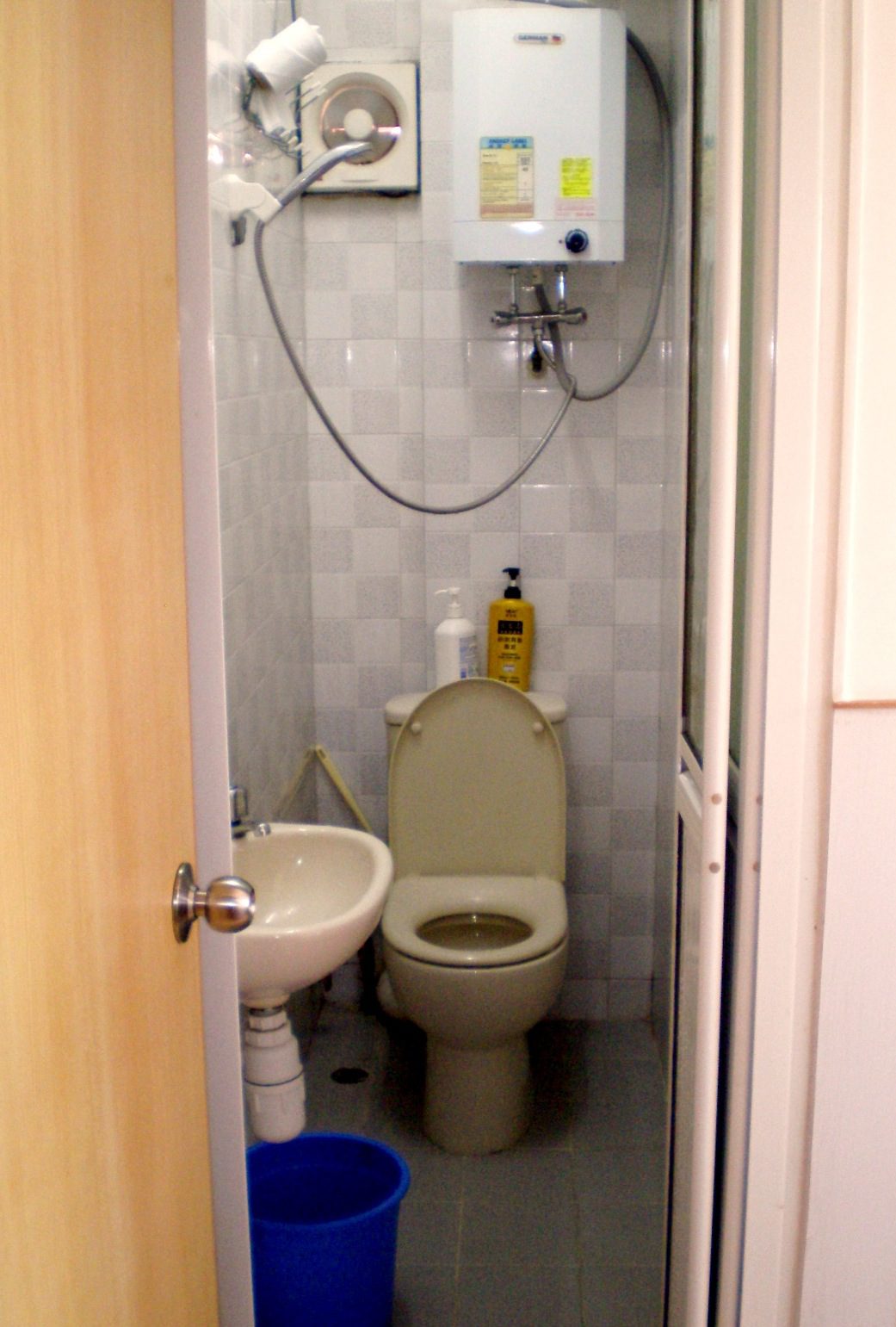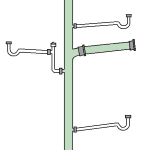Should I add a second bathroom?

A happy homeowner asked:
I’ve got a random question for you: I assume you see a fair number of half bathroom additions. Is it a sensible thing to even consider? Can it be done well? It would need to be on the 1st floor to make any sense, but there isn’t a lot of room, particularly given its need to vent to the outside. I vaguely remember seeing some sad toilets stuck in basements, which doesn’t seem like a sensible option. How important is that .5 of a bathroom to your typical client?
I answered:
Does it help resale?
The general opinion of my clients is that they prefer a bath and a half or two baths, even in condo. In houses, most insist on starting their search with a one and a half bath, or more. I hear this even from single people. People who have young children or plan on to have children while living in this property, insist on a toilet on every floor. So, adding a half bath on the first floor is a boon to your resale. Bathrooms generally pay back well (somewhat above 50 percent). In my experience the second toilet pays back much better than a third of fourth bathroom in a house.
Where do you put it?
 You are right that a bathroom (or laundry, or any plumbing feature) has to be vented to the outside. Houses usually have one or two stacks. These are pipes that allow air into the system, to avoid the “glug-glug” when water goes down the drain. They rise from the lowest plumbing fixture up through the house to a pipe above the roofline.
You are right that a bathroom (or laundry, or any plumbing feature) has to be vented to the outside. Houses usually have one or two stacks. These are pipes that allow air into the system, to avoid the “glug-glug” when water goes down the drain. They rise from the lowest plumbing fixture up through the house to a pipe above the roofline.
All the washing machines, sinks, toilets, tubs, and showers all connect into a stack. That’s why it is easier (and cheaper) to add a toilet, sink, or washing machine near existing sinks and bathrooms. The stack is nearby. Adding a stack is a lot of plumbing, and plumbing expense.
 Lots of times, new houses are built with the master bathroom sharing a plumbing wall and stack with the hall/family bathroom. If you think about it, hotels build their bathrooms back-to-back for the same reason.
Lots of times, new houses are built with the master bathroom sharing a plumbing wall and stack with the hall/family bathroom. If you think about it, hotels build their bathrooms back-to-back for the same reason.
The first thing to do is to see if there is room near the kitchen or under the upstairs bathroom. If not, look towards taking some space in the back of the house. This gives you a little more leeway for adding as stack where it might be ugly.
 Second, even half baths take up more room than is intuitive. Check with your town; their minimum square footage is more than you’d think based on your house-hunting experiences. All my clients regularly see sad little bathrooms stuck under stairs with teeny-tiny sinks. These bathrooms are most likely not to code. Some are grandfathered-in and some are just plain wrong.
Second, even half baths take up more room than is intuitive. Check with your town; their minimum square footage is more than you’d think based on your house-hunting experiences. All my clients regularly see sad little bathrooms stuck under stairs with teeny-tiny sinks. These bathrooms are most likely not to code. Some are grandfathered-in and some are just plain wrong.
Lastly, basement bathrooms are not all that useful.
- They have plumbing issues: The water needs to flow downhill to the sewer line. If the line is too high in that part of the basement, a pump needs to be installed to collect the water, then pump it up into the sewer line. Also, because the open toilet is so low, backflow can come into the house there. A back-flow preventer is needed.
- They do not add as much value because they are still a stairway away from the first floor. They are worth much less at resale than a first floor bathroom. If the basement is tricked-out nicely, has yard access, has good light, or is generally more lived-in than most basements, it still is not as good as a first floor. At best, it may be about seventy-five percent as good for resale as one on the first floor, but most will yield about twenty percent of the value of the same thing on the first floor.